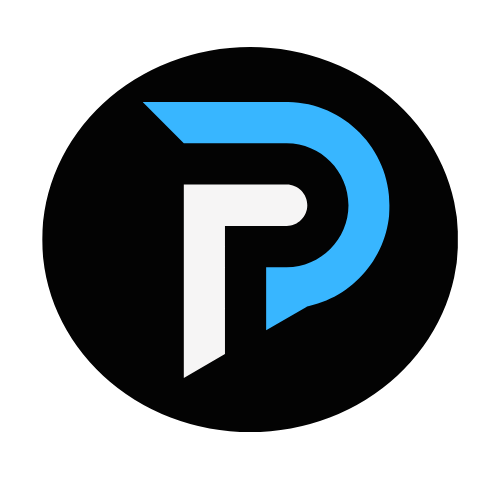The Year-End IT Optimization Strategy: Strengthen Your Infrastructure for 2026
INTRODUCTION
As the year winds down, most businesses focus on closing out projects, finalizing budgets, and setting revenue targets for the year ahead. But amid the rush of strategic planning, one critical area often gets overlooked: the health and performance of your IT infrastructure.
Technology isn’t just a support function anymore—it’s the backbone of every modern business. From daily operations and cybersecurity to scalability and innovation, your infrastructure determines how efficiently your company runs and how well it can grow. That’s why the end of the year is the perfect moment to step back, evaluate, and optimize.
By taking a proactive approach to IT infrastructure now, you can uncover hidden inefficiencies, strengthen your defenses, and build a foundation for smarter growth in 2026.
WHY YEAR-END IT OPTIMIZATION MATTERS
IT optimization is about more than updating software or cleaning up old files. It’s a strategic review of how your systems support your business goals—and where gaps may be holding you back.
Here’s why this matters at year-end:
- Strategic Budgeting
Budgets for the next year are typically finalized in Q4. By reviewing your infrastructure now, you can make informed decisions about what needs to be upgraded, maintained, or scaled, rather than reacting to problems mid-year when they’re more expensive to fix. - Performance and Efficiency Gains
Over time, systems naturally slow down or become misaligned with evolving workflows. Optimization ensures your infrastructure is running at peak performance, helping teams work faster and more efficiently. - Security Reinforcement
The holiday season is a prime time for cyberattacks. Outdated systems and unpatched vulnerabilities can leave businesses exposed. A year-end review allows you to strengthen defenses before threat activity spikes. - Scalability for Growth
Many businesses enter the new year with expansion goals—whether that’s new locations, new markets, or increased digital services. Your IT infrastructure must be ready to support that growth without bottlenecks. - Regulatory and Compliance Readiness
New regulations often take effect at the start of the year. An optimization review ensures you’re meeting current compliance requirements and preparing for upcoming changes.
In short, optimizing now puts you in control—rather than scrambling to react later.
THE COST OF IGNORING IT OPTIMIZATION
When businesses delay infrastructure reviews, problems compound quietly in the background. These issues may not be obvious day-to-day, but they can create costly consequences over time.
Some of the most common risks include:
• Hidden inefficiencies that increase operational costs
• Downtime or slow systems that impact productivity
• Security vulnerabilities that open the door to cyberattacks
• Incompatible or outdated technology that limits growth
• Unnecessary spending on legacy systems that no longer serve the business
Ignoring optimization doesn’t just affect IT—it affects every part of the organization. Departments become less efficient, employees lose time waiting on slow systems, and leadership is forced to make decisions without full visibility.
KEY AREAS TO REVIEW BEFORE 2026
The good news is that IT optimization doesn’t have to be overwhelming. By focusing on a few key areas, you can make meaningful improvements that have a direct business impact.
- Infrastructure Performance and Reliability
Evaluate how your systems are performing under current workloads. Are servers slowing down? Are there frequent outages or intermittent issues? Even small disruptions can compound over time, affecting productivity and customer satisfaction. - System Integrations and Outdated Technology
Many businesses rely on a mix of legacy systems and new tools, which can lead to inefficiencies if they don’t integrate seamlessly. Year-end is a good time to map out your technology stack and identify outdated tools that may be creating silos or slowing down operations. - Backup and Recovery Readiness
A solid backup strategy is non-negotiable, but backups alone aren’t enough. Confirm that your disaster recovery processes are tested, up to date, and aligned with your current infrastructure. A well-tested recovery plan can make the difference between hours and weeks of downtime. - Cybersecurity Posture
Review your security policies, patch management, and endpoint protections. Threats evolve quickly, and vulnerabilities that went unnoticed in March can become serious liabilities by December. Conducting a security review now strengthens your defenses going into the new year. - Capacity Planning for Growth
If you anticipate business growth in 2026, ensure your infrastructure can scale to meet increased demand. This includes reviewing bandwidth, storage, and compute capacity, as well as evaluating whether your current architecture is flexible enough to adapt.
Pro Tip: Conduct a Mini Infrastructure Audit
For businesses that want a clear snapshot of their IT landscape, a lightweight infrastructure audit is a smart first step. This doesn’t have to be a massive project—it can be as simple as:
• Listing critical systems and their dependencies
• Identifying performance bottlenecks
• Reviewing security logs for anomalies
• Checking the age and support status of key hardware and software
This quick audit can reveal where optimization efforts will have the greatest impact, helping you prioritize effectively for 2026.
A REAL-WORLD EXAMPLE
Consider two mid-sized companies in the professional services sector.
The first company postponed its infrastructure review, assuming everything was “good enough.” By March, they were dealing with frequent system slowdowns, outdated software that wouldn’t integrate with new tools, and a costly data breach caused by an unpatched server. The unplanned downtime disrupted client services, and the company had to make rushed technology purchases at premium prices to catch up.
The second company scheduled a strategic optimization review in Q4. They identified several underutilized tools, patched critical security gaps, and planned targeted upgrades aligned with their 2026 goals. When they expanded operations in Q2, their infrastructure scaled smoothly—without costly surprises.
The difference wasn’t luck. It was preparation.
HOW IMOS WORKS HELPS BUSINESSES OPTIMIZE
At PC Works Tech, we understand that most businesses don’t have the time or in-house expertise to manage complex IT infrastructure effectively. That’s where IMOS Works—our Infrastructure Management & Optimization Solution—comes in.
IMOS Works is designed to strengthen, oversee, and optimize your entire IT environment so your business can run reliably and scale confidently.
With IMOS Works, you get:
• Comprehensive Monitoring – 24/7 visibility into system health and performance
• Proactive Maintenance – We address issues before they disrupt your business
• Infrastructure Optimization – Strategic improvements that align technology with your growth plans
• Scalable Support – Infrastructure that grows with your business, not against it
• Expert Guidance – A dedicated team to help you plan, prioritize, and execute your IT strategy effectively
Instead of treating optimization as a one-time project, IMOS Works creates a continuous improvement cycle, ensuring your systems stay efficient, secure, and ready for what’s next.
CONCLUSION: START 2026 STRONG
Year-end is more than just a time for financial reviews and strategy meetings. It’s a chance to step back, optimize your IT foundation, and position your business for success in the year ahead.
By addressing infrastructure performance, security, and scalability now, you can reduce costs, eliminate surprises, and enable smarter growth in 2026.
PC Works Tech can help you get there. Through IMOS Works, we provide the expertise and visibility you need to keep your technology strong, secure, and aligned with your business goals.
Don’t wait for problems to surface—get ahead of them.
Contact PC Works Tech today to learn how IMOS Works can help optimize your infrastructure for 2026 and beyond.




No responses yet